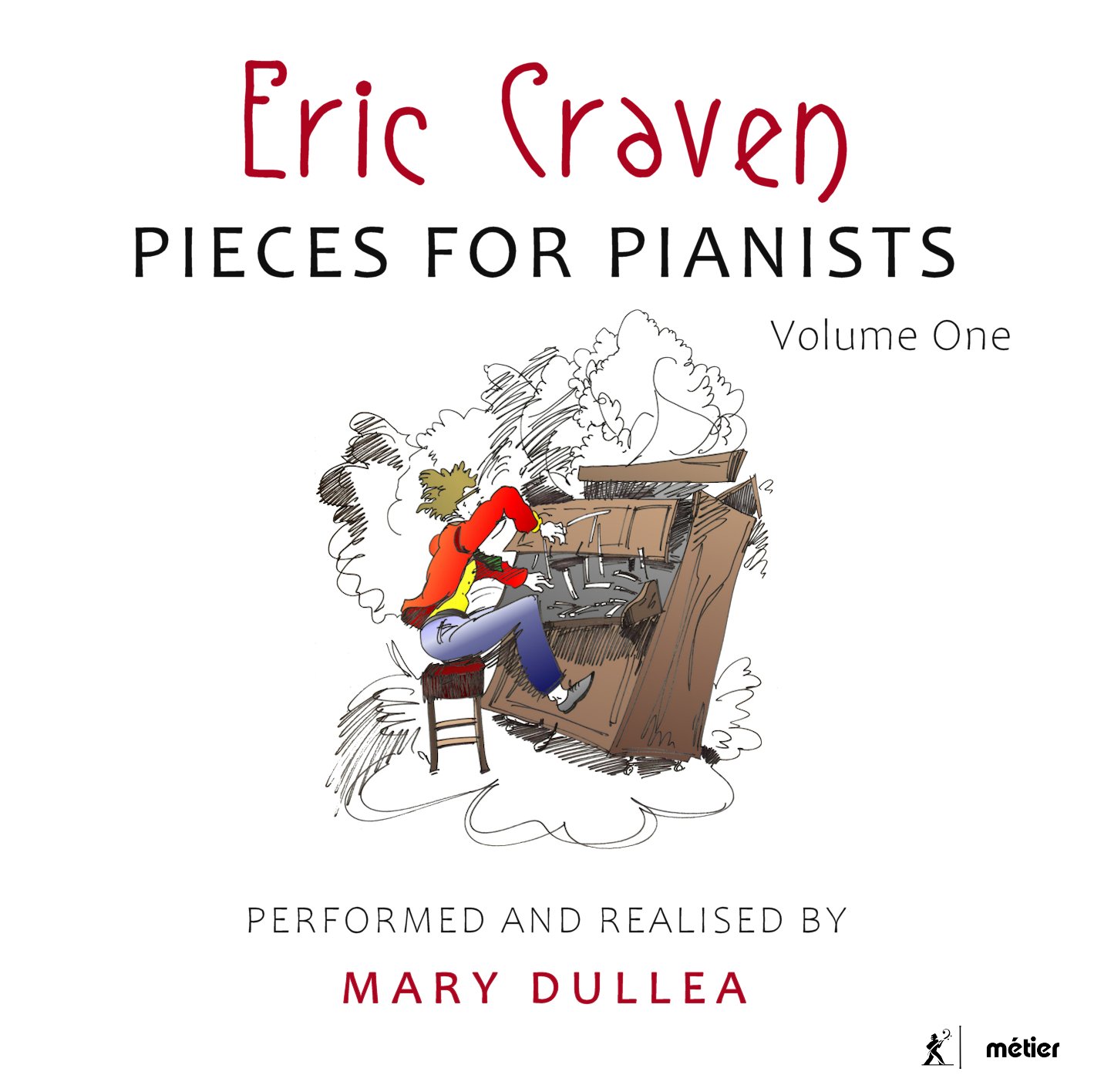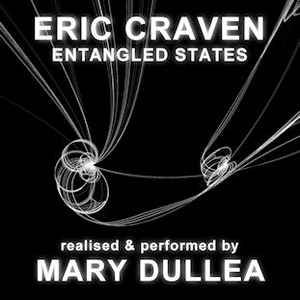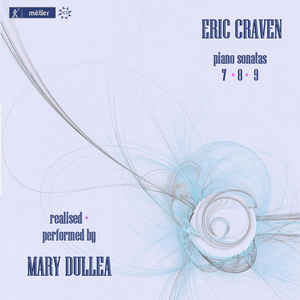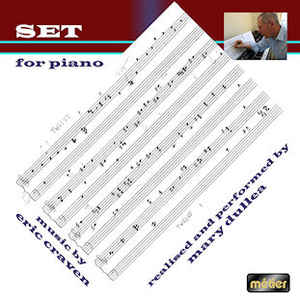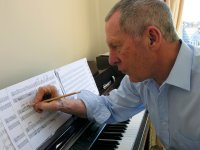It is six months since “Pieces for Pianists Volume Two ” was released by Divine Art under the Metier Label. And unusually, inexplicably, there has been an absence of reviews both in the USA and in the UK.
Until now.
The Author is Ken Meltzer who writes reviews for Fanfare magazine which is a bimonthly publication based in New Jersey. Its main purpose is to review recorded classical music.
Mr. Meltzer also wrote a most generous review for Pieces for Pianists Volume One which you can read by scrolling through to my more recent blog entries. He kindly states that Pieces for Pianists Volume Two “offers a wealth of intriguing, stimulating and inspired music making both by Craven and Dullea (my “long time advocate and collaborator”)
You can listen to selected pieces by clicking on audio samples at the top of my blog site.
In addition, the prolific American composer Carson Cooman has recorded several pieces from both volumes and issued them on YouTube.
The sheet music to both volumes is available from Naxos Sheet Music:
Volume One – Cat. No. EDN 80020
Volume Two – Cat. No. EDN 80021
and also Divine Art Records (same catalogue numbers) from where it is available as a PDF download in A4 size.
The Fanfare Review:
MSV 28602 Eric Craven: Pieces for Pianists, vol. 2
In the July/Aug 2021 issue of Fanfare I reviewed Volume 1 of English composer Eric Craven’s Pieces for Pianists (Metier), featuring Mary Dullea. At the conclusion of my review, I wrote: “an engaging, captivating, and charming experience from start to finish…. A fine recording, one that makes me look forward to hearing Volume 2.” Thanks to Metier, and our publisher, my wait is over, and I have been rewarded with another stimulating and pleasurable experience. Each of the Volumes of Craven’s Pieces for Pianists (2017-19) comprises 25 brief works. And each of the Volumes manifests Craven’s “Non-Prescriptive” method of composition and notation.
In my prior review, I offered the following description: “Craven’s ‘Non-Prescriptive’ mode of composition embraces three levels. First is a ‘Lower Order,’ in which ‘pitch, rhythm and duration of the notes are given. The performer decides upon such omitted parameters as tempo, dynamics, phrasing, pedaling and the articulation of the notes.’ ‘Middle Order’ components are ‘short fragments of data which can be presented in LO or HO systems of notation.’ The final component, ‘Higher Order Non-Prescription is achieved by stripping away all parameters except pitch.’ (All quotes are from the composer’s website:
ericcravencomposer.wordpress.com/introduction)
In short, Craven’s ‘Non-Prescriptive’ technique affords performing artists a remarkably broad latitude in interpreting and realizing the music in the printed score.” And so, on the cover of each of the Metier releases, Mary Dullea is credited as having “performed and realised” Craven’s music. In her “An Appreciation,” featured in the CD booklet, Dullea characterizes the Pieces for Pianists as “open-ended, non-hierarchical, inclusive and, commensurate with his approaches to non-prescriptive notation. It presents simply that – pieces to be played on the piano.”
The 25 Pieces on Volume 2 (as performed and realized by Dullea) range in length from 0:54 to 3:37. Craven intends the music for performance by pianists with a wide range of experience and technical ability. It’s not surprising that his writing tends to favor textures that are lean and transparent. I found the works in Volume 1 “generally [to] favor a more intimate and reflective mode of expression.” While that description also applies to Volume 2, there is also a more extroverted and mercurial character in some of those Pieces. As in Volume 1,I find an affinity between Craven’s writing and the piano works of Satie, Debussy, and Ravel.
In his thorough and informative liner notes, Michael Quinn acknowledges Craven “courting the poetic eloquence and atmospheric elegance of earlier French Impressionists,” albeit “at several steps removed.” Quinn also finds “allegiances to Craven’s coeval and like-minded contemporaries such as Howard Skempton, Arvo Pärt and La Monte Young.” Of course, Craven’s “Non-Prescriptive” compositional method invites the keyboard interpreter to pursue a re-creative, improvisational approach embraced by the likes of Mozart, Beethoven, and jazz artists of the 20th and 21st centuries. And there is more than a hint of jazz in several of Craven’s pieces.
Once again, I found Craven’s music admirably varied in mood and color, and thoroughly engaging throughout. Dullea continues her persuasive advocacy, playing with tonal beauty, textural clarity, and characterful phrasing. The recording provides a lovely, realistic, and intimate acoustic. Given the disc’s total playing time of under 61 minutes, I would have welcomed Dullea offering alternate realizations of some of the Pieces, as illustrations of how different they might sound while still remaining true to Craven’s “open-ended” vision. But that desire hardly stood in the way of my enjoyment of this recording. Pieces for Pianists Volume II offers a wealth of intriguing, stimulating, and inspired music making, both by Craven and Dullea. Recommended.
Ken Meltzer (Fanfare)
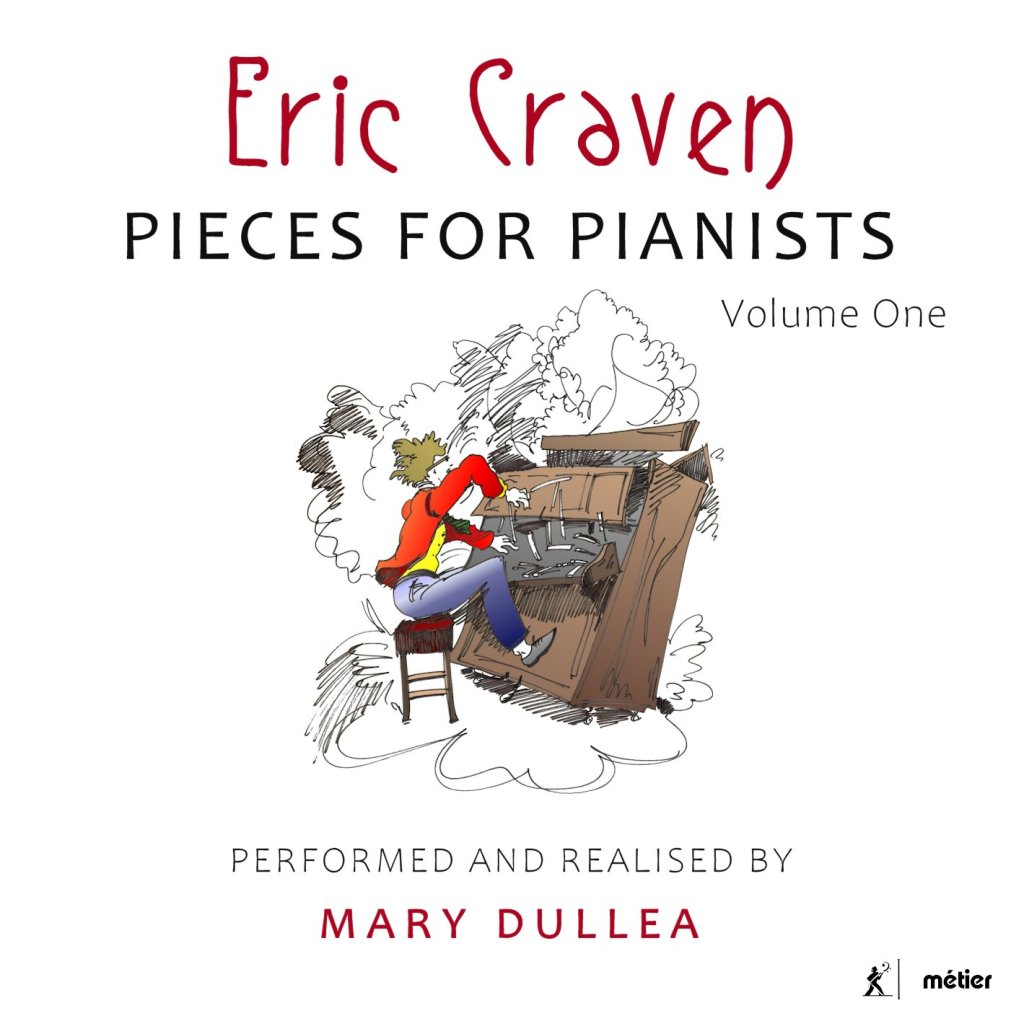
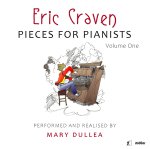 ” For most of his life Eric Craven has kept a very low profile, concentrating on his teaching career and quietly developing his ‘non-prescriptive’ composing method, a sort of aleatory style but which allows the performer varying degrees of freedom. His earlier cycle of short pieces, ‘SET’, was recorded after Craven was persuaded by leading pianists to make his work available. Highly praised, that technique is shown again to great effect in the ‘Pieces for Pianists’, producing music that is varied, interesting, but perfectly accessible for listener and performer. The composer states that his hope is ‘to reward any pianist with even modest ability with immediate success’ while also providing a challenge to more accomplished pianists to explore new territory.
” For most of his life Eric Craven has kept a very low profile, concentrating on his teaching career and quietly developing his ‘non-prescriptive’ composing method, a sort of aleatory style but which allows the performer varying degrees of freedom. His earlier cycle of short pieces, ‘SET’, was recorded after Craven was persuaded by leading pianists to make his work available. Highly praised, that technique is shown again to great effect in the ‘Pieces for Pianists’, producing music that is varied, interesting, but perfectly accessible for listener and performer. The composer states that his hope is ‘to reward any pianist with even modest ability with immediate success’ while also providing a challenge to more accomplished pianists to explore new territory. 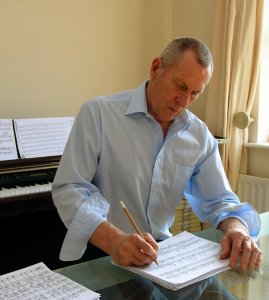 The backdrop to the recording was heavy incessant rain, fields becoming lakes and roads and motorways closed because of flooding. The world was swathed in a blanket of thick, grey, lowering cloud, the landscape rendered colourless. Going anywhere was difficult yet Mary Dullea, Adaq Khan and myself somehow managed to convene and over two days of intense work record 50 pieces, 25 for each volume. If you visit my previous post, “The Making of Pieces for Pianists” you will read in detail about the multi-talented people who have contributed to the making of the two CDs.
The backdrop to the recording was heavy incessant rain, fields becoming lakes and roads and motorways closed because of flooding. The world was swathed in a blanket of thick, grey, lowering cloud, the landscape rendered colourless. Going anywhere was difficult yet Mary Dullea, Adaq Khan and myself somehow managed to convene and over two days of intense work record 50 pieces, 25 for each volume. If you visit my previous post, “The Making of Pieces for Pianists” you will read in detail about the multi-talented people who have contributed to the making of the two CDs.
